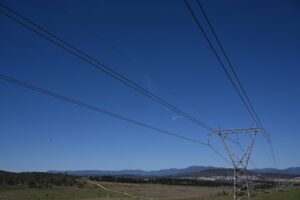The head of New Zealand utility Vector says network operators on both sides of the Tasman are locked into a decades-old mindset, and will struggle to adapt to a new environment where customers want to be in control of their own lives.
 In a keynote address to the Disruption and the Energy Industry conference hosted by RenewEconomy in Sydney this week, Vector CEO Simon Mackenzie said the energy industry was destined to be attacked by new players – Google, Apple and a host of unknown entrants.
In a keynote address to the Disruption and the Energy Industry conference hosted by RenewEconomy in Sydney this week, Vector CEO Simon Mackenzie said the energy industry was destined to be attacked by new players – Google, Apple and a host of unknown entrants.
Most incumbents, he said, were completely unprepared for this. And network operators, generators and even energy regulators were equally at fault. Some of their responses – such as jacking up network and fixed charges – were an “exercise in futility”, Mackenzie said.
“If you look back, there was no thinking about customers. The attitude was that we will build generation, transmission and distribution – and the customer should be happy that they can turn the lights on,” Mackenzie said.
“That attitude has permeated the industry for a long time. But that time has run out… customers now want to be in control of their own lives.”
Vector – whose primary business is to deliver electricity to 700,000 customers in and around Auckland – has been at the forefront of new thinking about technologies and business models.
It was the first in the region to introduce solar PV and battery storage options to its customers, and it will be one of the first to adopt the Tesla battery storage offering.
“The world is changing around us,” Mackenzie said. “Our vision is to create a new energy future … And not become a victim of it.
“We don’t see disruptive technologies as a threat, we see them as an opportunity to deliver services to customers, and to make savings on network investments. “
Mackenzie estimates that in the new Zealand market there is some $4 billion of revenue at risk from disruptive technologies. And these would not come just from rooftop solar and battery storage, but also the smart software and new business models that accompanied them.
Some of these new competitors were known – but some were not. “Look at Google and Apple, they will all do something in this space. But what is not known is who will be the Uber of the energy sector.”
“There are no experts in that space. If anyone says they are an expert on what is happening going forward, they are wrong. We will see change and it will get faster.”
So much so, that Mackenzie says the network is now taking a five-year perspective on its assets, rather than the 40-year outlook that has dominated an industry that has changed little in decades.
“They will come at us completely from left field and what they do to business model perspective is just not known.
“There has been too much focus on hardware – generation, solar, battery storage, cables and transformers. But there has been not enough on software and the consumer behaviour side of life.”
But he said many networks and regulators dismissed this as a “blip” in the radar and assumed that everything would get back in line. This was being reflected in decisions to try to penalise customers with tariff increases.
He cited a recent decision to lower the fixed usage charge for households with low consumption – for everyone except for those with solar panels.
Mackenzie said that made no sense. “They try to put barriers up to protect the market, but they will be broken down (by technologies). It is basically an endless search of futility. They wont be able to stem the tide.”
Mackenzie said Vector was looking at its network “upside down”, working out what the consumer wants and building it up from there.
He predicts “exponential growth” in customers wanting solar and battery storage. He said Vector’s surveys showed customers were not driven primarily by price (that ranked number 4), but by a desire to have control, to do something for future generation, and do something for the environment.
These people may be “early adopters”, but as the costs come down, it will become appealing to other consumers too.
Mackenzie said Vector had generated a huge response to its recent initiative to install solar and storage in community buildings and installations.








